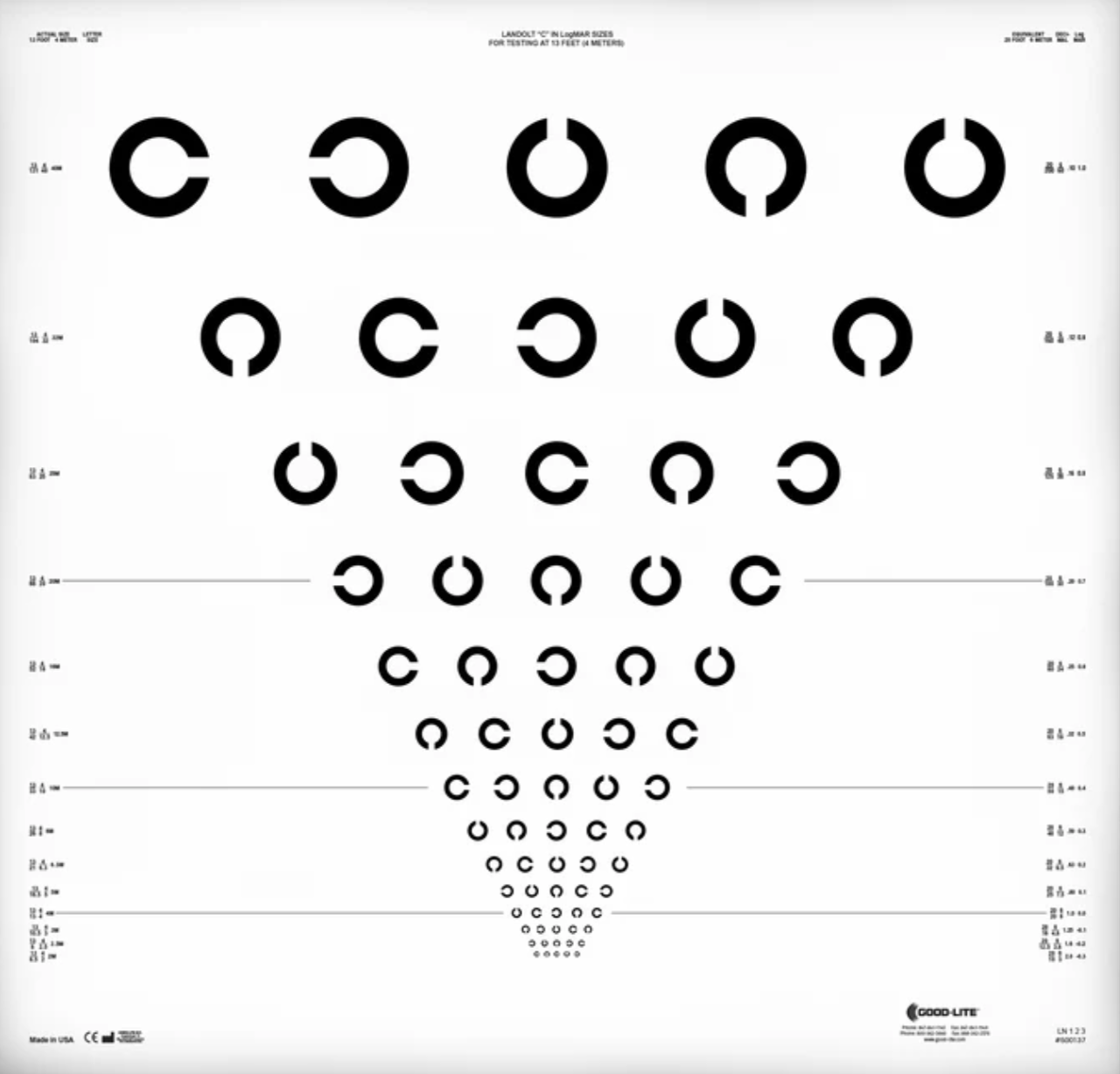 |
|
Pursuit gain, not target position on the retina, is the key factor for identifying the orientation of a moving C target in the macular degeneration group. Photo: Good-Lite. Click image to enlarge. |
Smooth pursuit eye movements help keep gaze on a moving target and minimize motion blur. Previous studies with large, highly visible targets report low smooth pursuit gains in individuals with age-related macular degeneration (AMD).
Researchers at the Smith-Kettlewell Eye Research Institute in San Francisco recently examined whether the characteristics of smooth pursuit (pursuit gain and placement of the fixational locus relative to the target) change when the task requires dynamic visual acuity (VA). They determined that those with macular degeneration have lower pursuit gains and fewer saccades during the presentation of the acuity-limited Landolt C target than during the subsequent pursuit of an annular target. Pursuit gain during the C target presentation, but not the distance of the retinal pursuit locus to the pursuit target, predicted discrimination task performance in participants with macular degeneration.
Using a scanning laser ophthalmoscope, the researchers recorded smooth pursuit eye movements in 10 eyes of six participants with macular degeneration (five with AMD, one with juvenile macular degeneration) and seven eyes of four age-matched controls in response to leftward- or rightward-moving annular targets (O) that briefly (300ms) changed to a Landolt C at one of several time points during the pursuit trial. Participants were asked to pursue the target and indicate the direction of the C opening.
Individuals with macular degeneration had lower pursuit gains and fewer saccades during the C VA target presentation than during the O, compared with their age-matched peers.
“In our study, we saw fewer saccades during the C presentation in those with macular degeneration than controls, suggesting that position error may not have played the same role in the two groups,” the researchers wrote in their paper, which was published on Tuesday in Optometry and Vision Science.
“This greater proximity to the center is likely because observers with macular degeneration attempted to track the target center rather than the opening, as the orientation of the opening was selected randomly on every trial,” they added. “These observations, combined with the finding that the preferred retinal locus in AMD is not necessarily at the location of the highest residual acuity in macular degeneration, may explain why distance from the target center does not have the same impact on dynamic visual acuity among our participants with macular degeneration.”
The study concluded that “compromised pursuit gains in participants with macular degeneration likely further compromise their dynamic visual acuity and thus ability to view moving targets.”
Shanidze NM, Verghese P. Smooth pursuit deficits impact dynamic visual acuity in macular degeneration. Optom Vis Sci. June 25, 2024. [Epub ahead of print]. |

